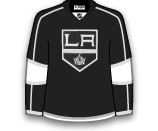McCoshen spent most of last season as a reserve defenseman for the Panthers, appeared in 38 games and picking up four points (3G / 1A) along the way. He goes back to the AHL where he has four goals and 13 assist (17 points) in his last 70 games.
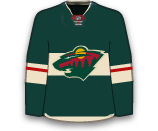
McCoshen spent most of last season as a reserve defenseman for the Panthers, appeared in 38 games and picking up four points (3G / 1A) along the way. He goes back to the AHL where he has four goals and 13 assist (17 points) in his last 70 games.

Hunt was an NHL hopeful but he will start the year in the AHL, where he accumulated 46 points (23G / 23A) in 58 games a season ago.

Borgstrom seemed like a lock to make the Panthers’ opening night lineup as a third line centre or winger, but he will start the year in the AHL. The 6-foot-3, former first-round pick (No. 23 overall) turned pro at the end of last season after compiling 23 goals and 29 assists (52 points) in 40 games at the University of Denver.
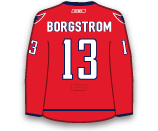
Sikura was among the final cuts from Blackhawks camp, leaving the team with 13 forwards. Sikura was expected to be a key contributor in an otherwise thin Blackhawks’ bottom-6, however a lacklustre training camp will see him start the season in Rockford. The 23-year-old is coming off of a 54 point (22G / 32A) in 35 game season at Northeastern University.
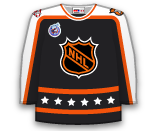
Wolanin was expected to make the Senators opening night roster but was one of their final cuts this weekend. Wolanin appeared in 10 games at the end of last season after turning pro following his junior year at the University of North Dakota.

Chlapik, 21, was close to making the Senators opening night roster, but was one of their final cuts this weekend. The former second-round pick had just four points (1G / 3A) in 20 NHL games a year ago and picked up 32 (11G / 21A) in 52 games in Belleville.
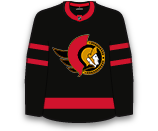
Zadina, who was expected to be a lock to make the Red Wings roster, did not do enough in the preseason to make the team. Zadina will head to Grand Rapids for some seasoning and could be one of their first call-ups if he plays well with the Griffins.

McLeod was selected in the second-round (No.40) of this summer’s draft and enjoyed a strong training camp. The Oilers have plenty of depth down the middle, so McLeod returns to the Steelheads, where he had 70 points (26G / 44A) in 68 games last year.

The Blackhawks picked Boqvist with the No.8 overall pick in this summer’s draft. The dynamic offensive defensman was unable to crack the opening night roster, so he heads to London for his first season in North America—he played in Sweden last year.

Suzuki was the prized prospect that the Canadiens received in the Max Pacioretty trade but was unable to crack the opening night roster. The 2017 No.13 overall pick returns to Owen Sound, where he has scored 87 goals with 109 assists (196 points) in 129 games over the last two seasons.

Dobson was picked No.12 overall in this summer’s draft but was always expected to head back to Juniors this year. The 18-year-old defenseman will try to build off of his 69-point (17G / 52A) sophomore season with Acadie-Bathurst.

Dal Colle was selected fifth overall in 2014 but has struggled to get things going during his pro career. The 22-year-old had 80 points (35G / 45A) in his final OHL season, but has just 22 goals and 43 assists (65 points) in 138 career AHL games since turning pro.
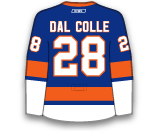
The other Sebastian Aho had four points (1G /3A) in 22 games with the Islanders last season but will start this year in the AHL. Aho was beat out by Devon Toews during training camp but will likely be their first D call-up when needed.

Bellows was the No.19 overall pick in 2016 and enjoyed a solid preseason, but will start the season with Bridgeport. Bellows enjoyed a great year in Portland (WHL) last year, collecting 74 points (41G / 33A) in 56 games. Bellows and/or Josh Ho-Sang will likely be the first forwards called-up from the AHL.

Ho-Sang, 22, was expected to crack the Islanders’ rebuilding roster to start the season, but will once again start the year in Bridgeport (AHL). The 2014 first-round pick (No.28 overall) had 31 points (8G / 23A) in 50 AHL games a season ago and has complied 22 points (6G / 16A) in 43 career NHL games. He will likely be one of the first forward call-ups for the Islanders this season.
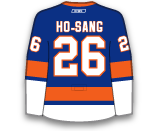
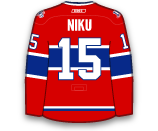
Soucy spent the majority of the 2017-18 season in the AHL, where he amassed 15 points (1G / 14A) in 67 games, but he also appeared in three games with Minnesota. With Ryan Suter definitely out to start the playoffs and Jared Spurgeon a big question mark, Soucy has been recalled and is expected to open the playoffs on the Wild’s second pairings.

Mermis, 24, has two goals and 17 assists (19 points) in 57 games with the Roadrunners this season. He returns to the NHL, where he failed to record a point in seven games with the Coyotes earlier this season.

McCollum backed up Jimmy Howard on Tuesday but returns to the Griffins where he is the No.1 netminder for the playoff push, at least until Jared Coreau is sent back.
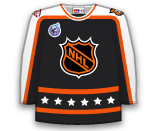
Hicketts had three assists in his short five-game stint with the Red Wings this season. Detroit’s season is virtually over, but the Griffins’ isn’t so Detroit will return some reinforcements. The 21-year-old defenseman has scored three goals with seven assists (10 points) in 63 games with Grand Rapids this season, which is way-off of his 34-points from a season ago.
